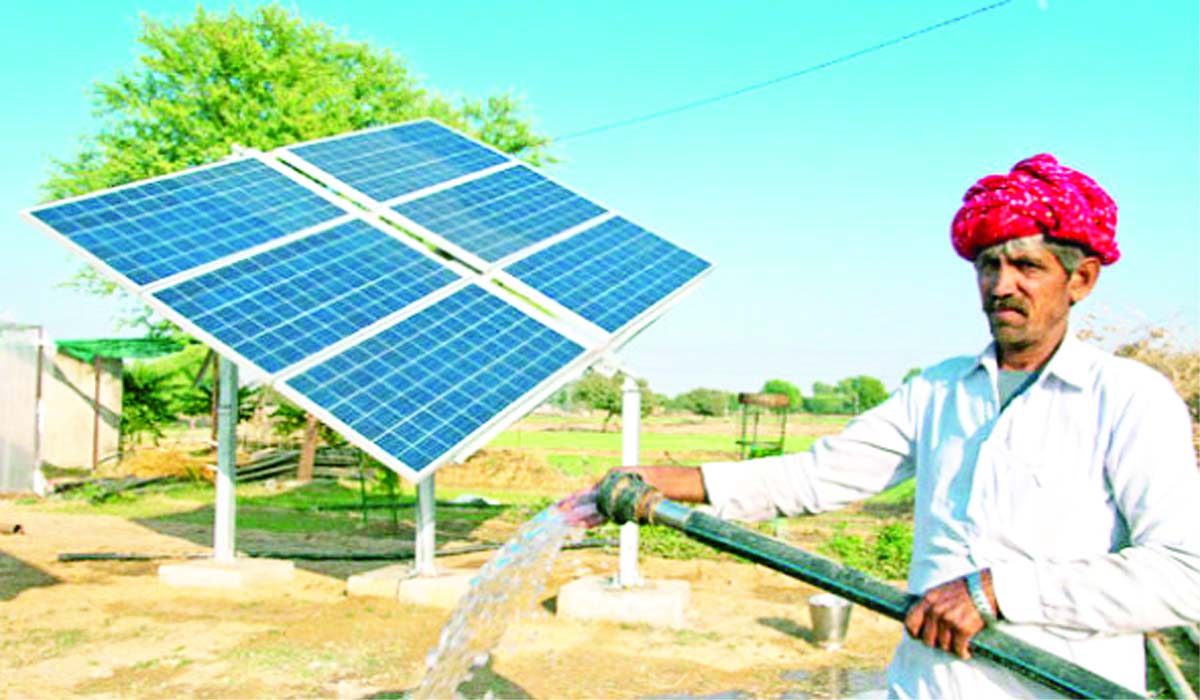Vinod Kumar Gupta
Solar power in India is growing at hectic pace and has crossed 31100 MW. The country’s solar ground mounted installed capacity has reached 28863 MW and roof top solar power capacity is 2238 MW as on 30 September 2019. The targets to be completed by 2022 for ground mounted solar plant is 60000 MW and for Rooftop plants it is 40000 MW but it is a tall task under the present circumstances. The annual growth rate of new solar installations collapsed from 63% in 2017 to just over 1% in 2018.
Rating agency CRISIL in its report said India would not have 100000 MW of solar capacity even by 2024, leave alone 2022. India is expected to only have 59000 Mw of solar plants by March 2022.
The major states in the solar power business are Karnataka, Rajasthan, Telangana, Andhra Pradesh and Tamilnadu. The cumulative solar installations in Karnatka are 6,182 MW while under development are 1,993 MW. In Rajasthan solar installations are 3,471 MW while under development installations are 2,114 MW. In Telangana solar installations are 3,455 MW and under development are 236 MW only. Similarly in Andhra Pradesh and Tamilnadu solar installations are 3,371 MW and 2679 MW respectively. The under development projects in these states are 1,692 MW and 1,179 MW respectively.
Solar energy is not a continuous source of energy. Therefore, exclusive transmission network for evacuation of power from these plants will remain under-utilized. The transmission system for evacuation of solar power needs to be strengthened so that it is easily available. The problem will remain until large scale storage of power is established. Open access charges in most of the states are very high therefore investor is not inclined to invest in solar power plants for captive and third party sale projects.
Payment dues of solar power producers are mounting and this is effectively impeding the working capital flows for these companies and hindering their debt servicing capability. According to Central Electricity Authority (CEA) Discoms owe about Rs. 10000 crore to renewable power producers. The delay in payments in some cases is one year. Southern states account for three quarters of pending payments.
Further review of power purchase agreements by Andhra Government on pretext of irregularities in power purchase agreements by previous government is sending solar power sector in a tizzy.
Solar panels have become more efficient with time but the problem of storage still remains expensive.
Roof Top solar system
The present achievements in the roof top sector are hardly 5 to 6 %. Under these circumstances it seems extremely difficult to achieve the balance target of 37000 MW in next three years unless some drastic steps are taken. The present subsidy is only for the residential sector for load up to 10 KW only.
The Government tendering process is very slow and cumbersome and the subsidy amount by nodal agencies are only given after they receive it from MNRE and that too in a time of 2 to 3 years.
As the prices have already come down therefore subsidy should be stopped as has been done with solar water heater sector. Roof top power plants should be made mandatory to startup in industrial and commercial sector. Moreover there is no transmission losses in roof top solar system. The rate of accelerated depreciation which has been brought down to 40% should be restored to 80%.Banks should be advised to give finance at the concessional rates.
Normally the megawatt tenders are generally for the higher capacity of 50 MW and above and therefore many investors who want to set up small solar plants in the range of 1MW to 5 MW should also be encouraged.
There are some areas which have not been connected to grid or it is not available for 24 hours and for such cases there is need to make some mini solar grid plants.
Decentralized solar units are still being installed without providing a proper service system. Thus, it is unlikely that decentralized solar irrigation will take off in a major way in this country without subsidy from the Government.
Solar powered pumps are a huge investment that does not make economic sense without a subsidy
The solar panels need to be cleaned for dust regularly. If this is not done then the dust that settles on the panels reduced their energy absorption efficiency. As the solar panels are normally at a height on the roof they are cleaned even once a month leading to some loss of energy production potential.
Despite power sector reforms the financial condition of India’s power sector Discoms remains precarious. The private sector has made investments only when it has had agreements assuring guaranteed returns, and not if they have to depend on the vagaries of the market. Enough has not been done to promote renewable energy generation and consumption, require pro-active subsidies. Tangible Government support for projects could be a significant impediment for the country’s clean energy future.
(The author is Spokesperson All India Power Engineers Federation)
feedbackexcelsior@gmail.com
Trending Now
E-Paper


